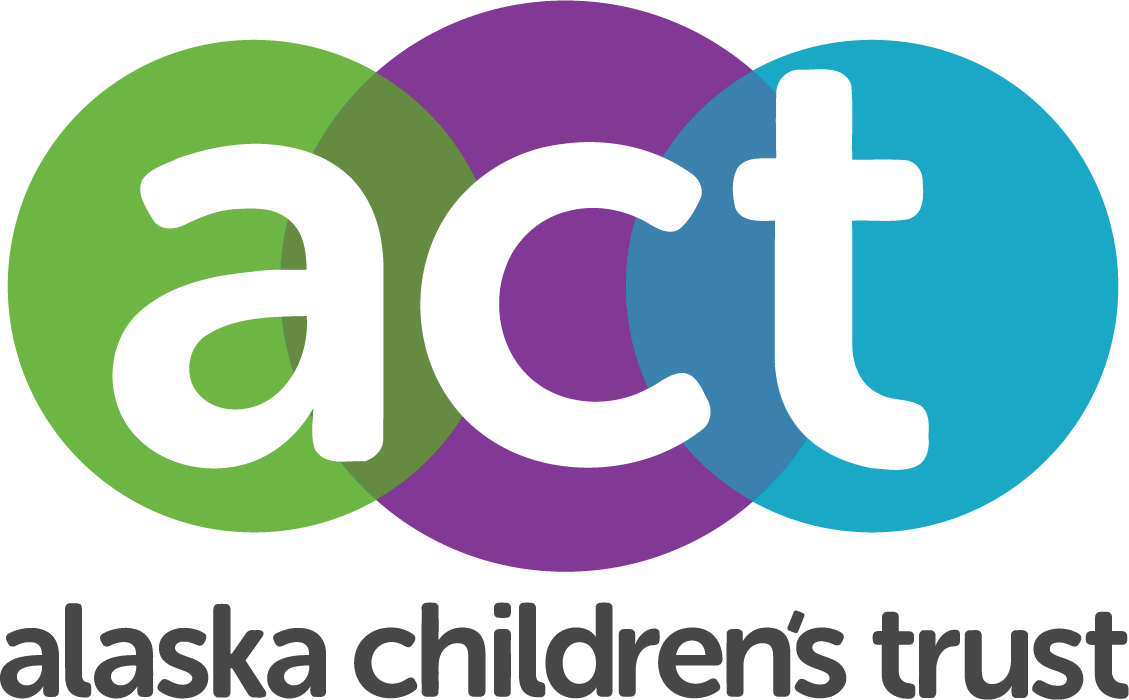ACT’s Theory of Change Sets a Course to Prevent Child Abuse and Neglect
For centuries, people have used a compass for navigation and orientation, allowing them to confidently move toward their desired destination. For over 30 years, the Alaska Children’s Trust (ACT) has been steadfast in our mission to prevent child abuse and neglect. But how we would achieve that mission was never clear. We were missing our compass.
In 2019, ACT’s Board of Directors and staff began to build our compass – our theory of change. A theory of change is an intentional and strategic approach to defining an organization’s direction and intended impact. It acts as a compass and creates a road map, a structure that allows an organization to systematically ask questions and use data to determine how it will achieve its mission. A theory of change helps an organization focus its decision-making and prioritize its resources. It’s a framework that helps an organization achieve and maintain sustainability while staying focused on its long-term impact.
ACT has completed the process and has adopted our theory of change. ACT’s theory of change is built on the premise that child abuse and neglect can be prevented. Although Alaska has one of the highest rates of child abuse and neglect in the nation, per capita, the raw numbers are small compared to most other states.
With a small population, the extensive connectedness of Alaskans, and the fact that most Alaskans live in urban settings, Alaska is positioned well to reduce child abuse and neglect cases. Our overall numbers are manageable and meaningful change is attainable.
Plus, with Alaskans having only one to two degrees of separation, the ability to access decision-makers, build community support, and increase awareness is easier. This is especially true for rural communities. With most Alaskans living in an urban setting, the ability to reach a high number of individuals is easier, cost effective, and can have tremendous impact on current trends. With the close nature of rural communities, rural-specific interventions can have tremendous impact. These same factors will also allow Alaska to increase support and treatment for those who experience toxic stress and trauma, helping to build resilience within individuals, families, and communities.
By launching our theory of change, ACT is entering a new era. ACT updated our mission to “Prevent child abuse and neglect” to reflect the core of our work. Our work focuses on primary prevention, with the goal of supporting children and families before they experience child abuse and neglect, rather than secondary and tertiary interventions, which focus on families at high-risk of child abuse and neglect, or families where abuse has already occurred, respectively.
In the coming years, ACT plans to concentrate on implementing the strategies identified in our theory of change. We will rely on data, research, and best practices to ensure policies and systems promote well-being, versus perpetuating trauma that can lead to child abuse and neglect. We plan to build individual, family, and community resilience, elevate the voices and accomplishments of leaders, advocates, and experts in the field, and invest internally to strengthen organizational sustainability to best meet the needs of Alaskan children.
Learn more about ACT’s theory of change by reading the full Theory of Change here or at www.alaskachildrenstrust.org/about-us. Together we will prevent child abuse and neglect.

